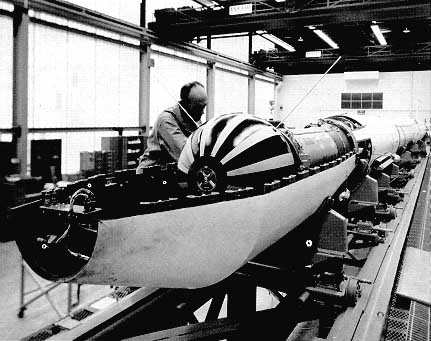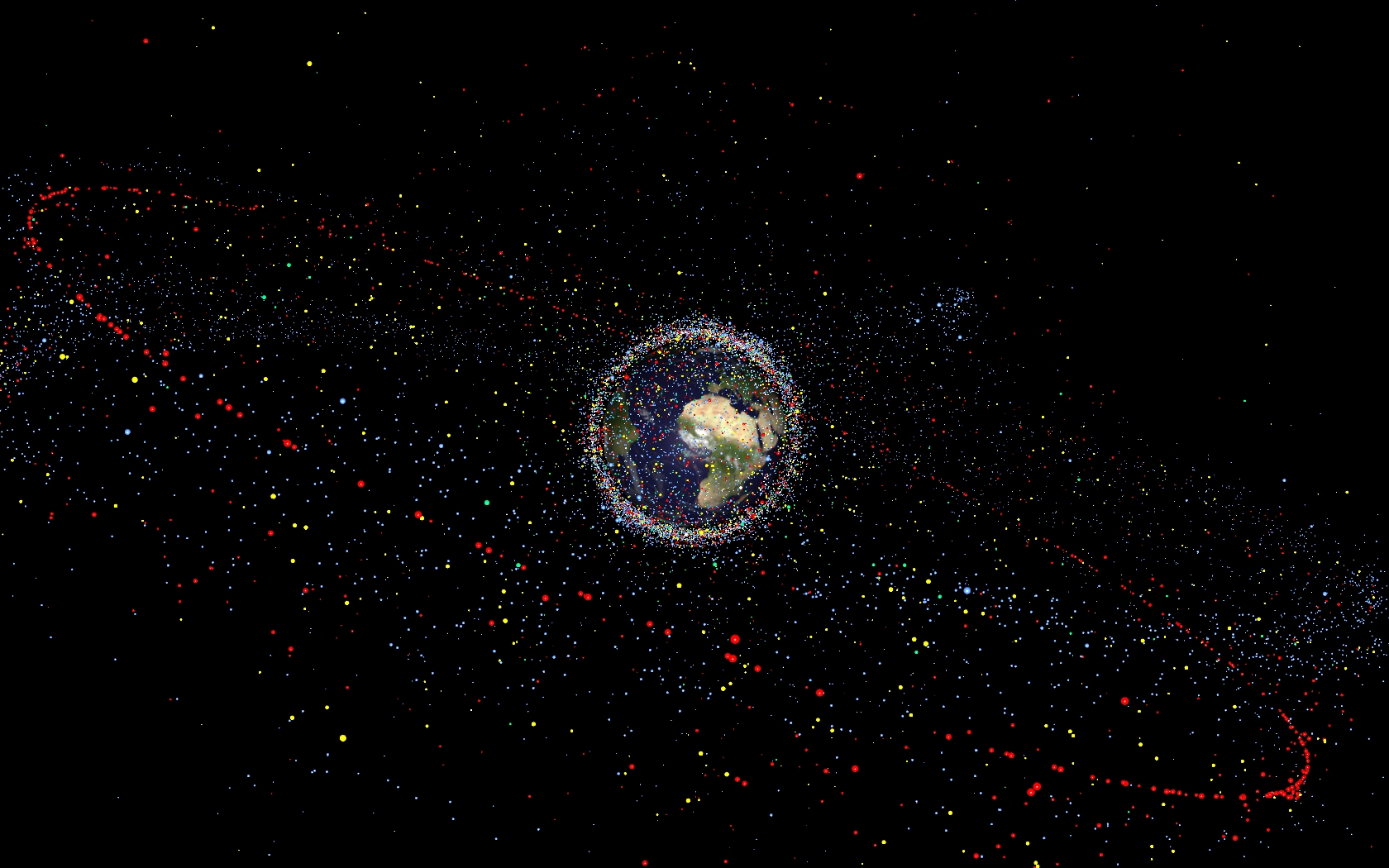The Italian Air Force has been a vital part of our country's space history from the very beginning: on 15 December 1964, Italy launched the San Marco 1 satellite into orbit, becoming the third country in the world - after the United States and the Soviet Union - to go beyond the atmosphere and conquer its own independent access to Space. From this project onwards - the brainchild of Luigi Broglio, General of the Air Force Corps of Engineers - Italy, with Leonardo, has maintained a high competitive profile at the international level, also thanks to companies such as Officine Galileo, FIAR, Aeritalia, Laben and Selenia Spazio which later merged with Leonardo's space activities and the Telespazio and Thales Alenia Space joint ventures.

San Marco project, Assembling San Marco 1 into the carrier rocket Scout - ©NASA
Thanks to major international agreements between Leonardo and the most important space agencies and companies in the industry, the mission pursued by its space activities is also to support the Italian Air Force's commitment to the public.

The Fucino space station became operational in 1963, operated by Telespazio, a
joint venture between the Italian national broadcaster RAI and Italcable, a company
specialising in long-range communications. Two years later Telespazio joined the
Eutelsat consortium and came under STET. The company continued to increase its
technical service portfolio and changed hands several times before coming under
Finmeccanica in 2002
Over time, its Space Situation Awareness (SSA) capabilities have been implemented. This is defined as the knowledge and capacity to predict space phenomena and the position of any bodies that could potentially constitute a national threat, incorporating Space Surveillance & Tracking (SST) activities for the surveillance and tracking of orbital space around the Earth in order to monitor and predict the path of satellites and space refuse.

Distribution of debris ©ESA
Since 2019, the Leonardo Group and the Italian Air Force have been working alongside national research organisations, universities and industries on the development of technology for launching small satellites from an airborne platform. In 2022, Telespazio and the Italian Air Force signed a five-year contract to supply engineering support to EUMETSAT's international H-SAF programme (Satellite Application Facility on Support to Operational Hydrology & Water Management), led by the Italian Air Force Meteorological Service, which provides geospatial services and applications to support operational hydrology, monitor natural disasters and improve the management of water resources. A key role in managing and forecasting weather events is also played by satellites. These include those of the Meteosat programme, in which Leonardo - together with Telespazio and Thales Alenia Space - is a key player, with the first third-generation satellite of the EUMETSAT/ESA programme launched into orbit at the end of December 2022.
In July 2021, a collaboration with the Arma Azzurra was launched through Thales Alenia Space to promote low-Earth orbit access for institutions, the Italian scientific community, industry and commercial operators, favouring the development of a research pipeline on strategic themes (e.g. medicine, new materials, biogenetics), technological development and OT&E (Operational Testing & Evaluation) in microgravity.
The space defence programmes SICRAL, COSMO-SkyMed and OPTSAT-3000, in relation to which Leonardo and its joint ventures play a key role in both the space and terrestrial segments, contribute to satisfying the Italian Air Force's needs and operational requirements for secure satellite communications and geo-information.
In the history of the Group there is a constant commitment that draws upon its past energy and innovative drive that made - and still makes - Leonardo one of the nation’s leading engines of technological innovation. And it is precisely by pursuing this path - a process which has strengthened its resolve in reacting to increasingly challenging needs and requirements - that the company has focused, in the last two decades, on cyber security and cyber resilience as indispensable and enabling elements in all of its technologies. From the past to the present to the future: cyber security will also be an aspect of central importance in GCAP (the Global Combat Air Program).
The resilience to cyber threats of airborne platforms and infrastructures is managed by Leonardo at all stages, including the development of cyber-secure-by-design systems, the testing of physical and virtual networks and equipment, and the provision of threat intelligence services.
Without forgetting the constant updating of the skills needed to manage and recognise threats and cyber-attacks: Leonardo, with its Cyber & Security Academy, provides the Italian Air Force with training activities designed to raise the cyber resilience of avionics platforms and equipment, applying its own proprietary methodologies and assessing and testing the resilience of these platforms. This last activity is enabled by Leonardo's Cyber Range, an operational environment that creates fully-fledged digital twins of the infrastructures to be protected and simulates cyber attacks with an extreme level of realism.
This collaboration with the Air Force within a cyber environment was further consolidated through the provision of Threat Intelligence services for the purpose of preventing, detecting and responding to cyber threats and in order to test the RoiPAM network (IP operations network) used by the Air Force's “mission critical” applications.
Cover photo: Meteosat Third Generation, one of the most complex and innovative satellite systems ever built. Launched on December 13, 2022, the European Space Agency (ESA) and EUMETSAT’s Meteosat Third Generation (MTG-I 1) is the first in a new generation of weather forecasting and climate monitoring satellites. Onboard of the four satellites there is a “lightning imager”, an instrument to “see” lightning from space, developed and designed by Leonardo. The company is also supplying photovoltaic panels (PVAs) and star trackers for all the satellites. (Credits: ESA)

